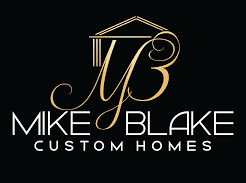Best Wall Sheathing – Zip System
At Mike Blake Custom Homes we understand that one of the biggest obstacles to achieving superior energy-efficiency is air leakage. Air leakage is the unintended movement of air into or out of a building enclosure. This is caused when the materials that comprise a building’s air-barrier system are ineffective. The United States Department of Energy reports that over 30 – 40 percent of the cost of heating and cooling a home is lost to uncontrolled air leakage. This can hamper the performance of other building systems such as insulation and HVAC. Proper air sealing helps reduce uncomfortable temperature fluctuations and often allows for smaller, more efficient HVAC equipment. Heating and cooling account for 50% to 70% of the total energy used in the average home. Managing air infiltration, exfiltration, water vapor and R-value will play an important role in the future of home building. Because air leakage is a significant contributor to energy waste, properly sealing the building envelope is one of the most critical steps in constructing an energy-efficient home, and therefore, saving on energy costs.
ZIP System sheathing has a built in air-resistant barrier that does just that, and ZIP System’s proprietary tape helps eliminate gaps in the building envelope, reducing air leakage from areas such as wall joints.
WHY ZIP SYSTEM?
The technology behind ZIP System sheathing helps provide one of the most comprehensive air barrier systems available—significantly reducing heating and cooling costs, improving a building’s durability and creating a healthier indoor environment. In fact, compared to traditional housewrap, ZIP System reduces air leakage by 99%.
By simply taping the ZIP System panel seams with ZIP System tape, ZIP System wall sheathing effectively seals the wall system, decreasing unwanted air leakage into and out of the home. ZIP System panels are engineered structural PS-2 rated panels with permanently integrated protective barriers. Independent testing labs have demonstrated the difference in air leakage between ZIP System wall sheathing and traditional housewrap through standard air barrier assembly testing. The results are clear. ZIP System wall sheathing outperformed traditional housewrap—proving the superiority of a ZIP System air barrier.
BUILD TIGHT, VENTILATE RIGHT
The building industry is abuzz right now over how tight is too tight when building a home. Can a tight envelope have a negative impact on moisture management or air quality in the home?
Some believe that a fair amount of ‘accidental’ air leakage is good for a home as it allows for a building to breathe. Unfortunately, this accidental air is uncontrollable and normally of poor quality because of its origin into the building—crawlspaces, attics, garages, etc.
Well-respected building science organizations such as ABAA (Air Barrier Association of America) and ASHRAE (American Society of Heating Refrigerating and Air-Conditioning Engineers) recommend that homes should be built as tightly as possible but with proper ventilation. The message is clear: BUILD TIGHT, VENTILATE RIGHT
KEEPING UP TO CODE
The energy codes are changing faster than ever so adhering to code requirements is critical when building. ZIP System wall sheathing has been designed to meet the growingly stringent building code requirements; current International Residential Codes (IRC) include the requirement of an air barrier to prevent air leakage through the building envelope (IECC Section 202); Compared to 2009 when 7 air changes per hour (ACH) were acceptable in any climate, in 2012, this number must be decreased to 3 or 5 air changes per hour, depending on the climate zone.
THE SOLUTION
The revolutionary science behind ZIP System sheathing, and ZIP System tape, is the solution to this problem. By sealing panel joints and gaps, and thereby reducing air leakage, ZIP System wall sheathing protects the effective R-value of insulation so that builders and homeowners can:
- Lower the rate of heat and cool air flow
- Use less energy to heat and cool a home
- Increase overall energy efficiency
- Reduced risk of water vapor movement
- Improved air quality
